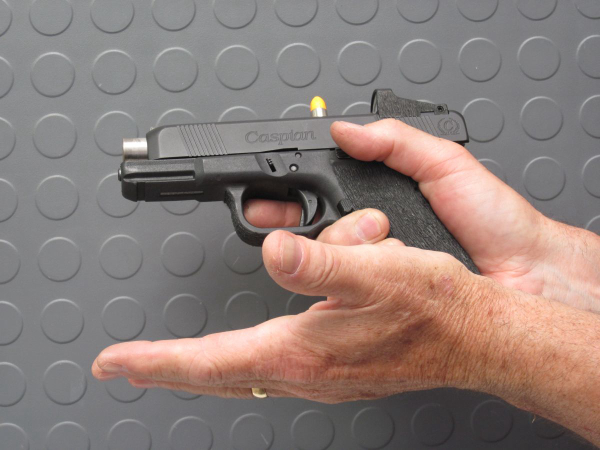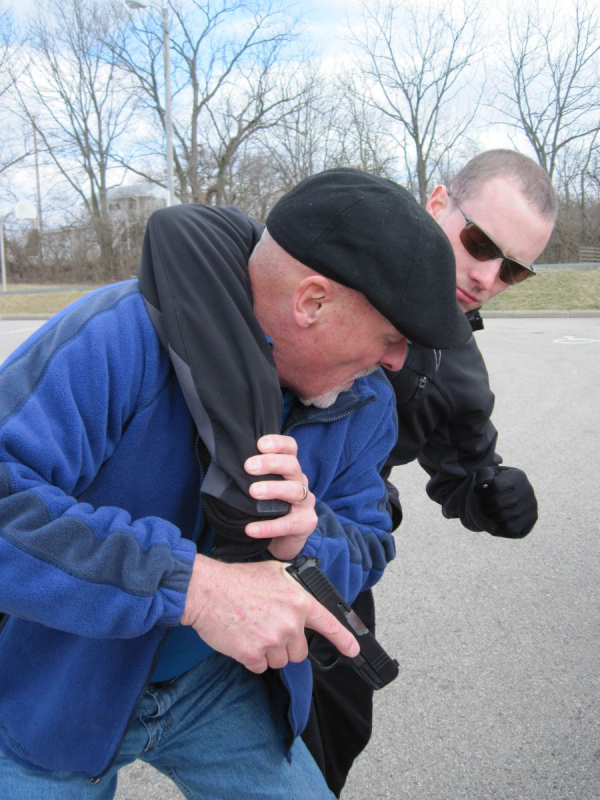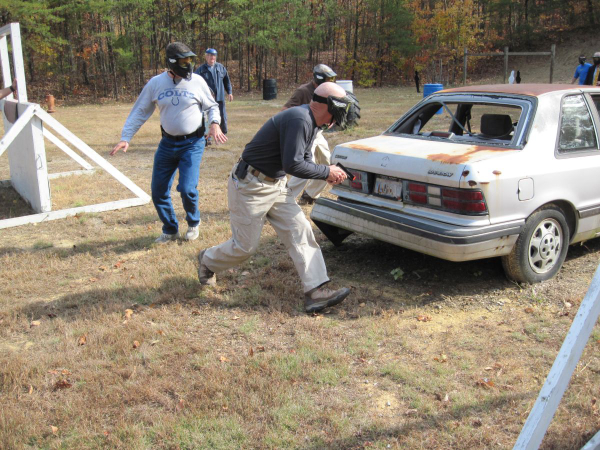Today’s piece is from correspondent Dave Spaulding.
sit·u·a·tion - siCHəˈwāSHən.: a set of circumstances in which one finds oneself; a state of affairs. The location and surroundings of a place.
Drawing, shooting and reloading fast are nice skills to have, but I feel it is safe to say they seldom win fights. Having them does offer confidence that helps overcome fear, but they are not the biggest factor in achieving victory. What wins the fight is the ability to recognize what is actually transpiring and quickly adapt to the rapidly changing situation. “Situation” is the operative word here as the dynamics of any fight can change quickly. The combatant that can adapt the quickest, the one that can bring their skills to the forefront in the order needed, will prevail. Speed of recognition is what we should be working on.
Being “adaptive” is the “ABILITY to change as necessary.” Being adaptive is what wins gunfights.

Foundational skills, best known as Essentials, are taught and honed on the square range.
We have all heard the phrase “circumstance dictates” or “it’s situationally dependent” and this is certainly true of any fight, especially one that involves firearms. A proper structured combative pistol program must cover three different levels of training to be complete. The first level is “The Essentials.” They are commonly referred to as “the basics” or “fundamentals” but I prefer to call them essential as they are more than just forming a foundation, they are necessary to prevail. I feel the word fundamentals has been used to the point where we no longer recognize their importance. In addition, none of these skills is more important than the next. We must master them all. You see, an essential skill as anything that keeps the gun running in a fight.

Skills like stoppages clearances can be mastered at home without firing a shot.
If there were a “most essential of essentials” it would be mindset. Shooting can certainly be successful without mindset, but fighting cannot. Your state of mind (not the same as mindset) at the time of the fight will be a huge factor in the outcome. Note I said “at the time of the fight.” If you are suffering from the stomach flu when you are attacked, it will certainly affect your response. Mr. Webster defines mindset as “a course of action based on a previous decision, a set path based on reason and intellect.” The operative phrase here is a previous decision; something you decided ahead of time before the fight breaks out. The word “combative” is defined as “ready and willing to fight” which does not mean you are looking for one, it means that if you cannot avoid or evade it, you are willing to engage and finish it. Thus, a combative mind is one that has made a previous decision to be ready and willing to fight. Without a combative mindset, and a proper state of mind at the outset of the fight, learning fighting skills is a waste.
Once the students know how to shoot, they must be able to fight with the gun and that requires specific skills that are also best achieved by attending training with a qualified instructor. Such combative skills would include contact shooting, combining open hand skills with the handgun, alternate shooting positions quickly, cover and concealment, one hand manipulation, shooting from less than advantageous positions, reduced light application, learning one’s point shooting threshold and when to use the sights, shooting in and around non-hostiles and a host of other things that are not addressed at the essential level. This will be a period of training where you will not look your best and you will miss a lot but don’t be discouraged. It is the combative skills level where the shooter will learn the things they need to adapt to the rapidly unfolding situation.

Open hand skills combined with close quarter shooting is certainly a combative skill which can be bolstered with interactive training.
DRILLS ARE NOT TRAINING! Drills are part of the training process and certainly help build and test skills, but they are not the end goal. Use them wisely.
A good example of the type of skill that makes you more adaptive is movement. Moving in a gunfight is not new and has been done since people started shooting at each other. The truth is, most shooters are more accurate when they move rapidly and stop/plant to shoot, versus trying to shoot while moving.
Former Delta Force operator Paul Howe addressed it quite succinctly when he wrote, “Reference shooting on the move. It is a skill many shooters aspire to learn and spend a great deal of time and effort trying to master. I have never had to use it in combat. When moving at a careful hurry, I stopped, planted and made my shots. When bullets were flying, I was sprinting from cover to cover moving too fast to shoot. I did not find an in between.” Knowing when to move, shoot while moving or plant and fight is just one example of adapting to the situation.

Interactive training is not just scenarios; it can be any skills that need to be “proofed and polished” to build confidence.
What is commonly called “force on force” I prefer to think of as interactive as it is more descriptive of what occurs. It is training during which students interact with either another human being, an electronic simulator or work in a 360-degree environment like a shoot house. While many believe the goal of interactive training is “to place the shooter in a gunfight”, the real goal is “stress inoculation” which makes the student function in a duress filled environment, making decisions rapidly in pandemonium along with the mistakes associated with such an environment. But more importantly, interactive training shows the student the skills learned at the other levels will work in a threat environment, increasing confidence in skills.
It’s all about options, having a battery of skills to draw upon when a crisis situation unfolds. What works is to keep the skills simple and consistent with a commonality that will allow the shooter to move from one to the next with minimal thought, movement and effort. Rapid adaptation is the key so train hard and choose wisely.
— Dave Spaulding